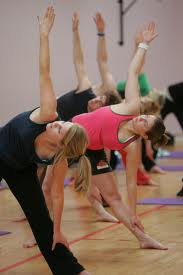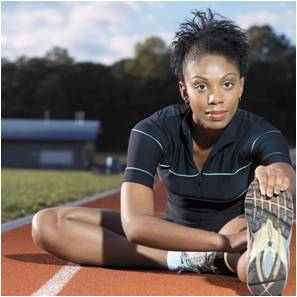
When did you last take time to stretch? If you practice yoga or Pilates regularly, perhaps it was sometime this past week. If you’re like me, you might take a few minutes to stretch at the end of a cardiovascular workout.
The Physical Activity Guidelines for Americans state that stretching exercises can increase flexibility and are an appropriate component of a physical activity program. However, because the health benefits of stretching exercises alone are not known, and it is unclear whether they can reduce the risk of activity-related injuries, time spent doing stretching exercises does not count toward meeting the key guidelines for aerobic or muscle strengthening activities.
Nevertheless, maintaining flexibility through regular stretching promotes mobility, independence, and a healthy range of motion in your joints. Inflexible muscles can shorten, weaken and become tight, which can put you at risk for joint pain, strain, and muscle damage.
If you don’t currently have a stretching routine and are not sure where to start, select a few stretches to do three to four days per week. You might choose to focus on muscles that are critical for mobility, such as your calves, hamstrings, hip flexors and quadriceps. Or, you might choose to focus on areas of your body where you carry tension, such as your shoulders, neck, and lower back.

Warm up your muscles prior to stretching with five to ten minutes of light activity, such as walking. Then, hold each stretch for 30 seconds and do not bounce, as this can cause injury. You should feel tension during a stretch, but not pain.
If you feel pain while stretching, stop your routine and talk with a doctor. You should also talk with a doctor or physical therapist prior to beginning a stretching routine if you have an injury or chronic condition, such as Parkinson’s or arthritis.
You may find it beneficial to work with a physical therapist or personal trainer when starting a stretching routine, even if you don’t have injuries or conditions of concern. I recently tried a total body stretch session at a local massage clinic, in which a therapist spent an hour coaching me through a variety of stretches. With the help and coaching of a professional, I stretched my body in a more purposeful and deeper way than I typically would, and I held the stretches longer than I typically do.
If working with a professional seems daunting but you still want to try more than a few simple stretches at home, you might consider myofascial release or other self-massage techniques to help loosen your muscles. And, as mentioned previously, yoga and Pilates are also nice ways to work regular stretching into your physical activity routine.
Sources:
Harvard Health Publishing (2019). The importance of stretching. https://www.health.harvard.edu/staying-healthy/the-importance-of-stretching
U.S. Department of Health and Human Services (2018). Physical Activity Guidelines for Americans, 2nd edition. https://health.gov/paguidelines/second-edition/pdf/Physical_Activity_Guidelines_2nd_edition.pdf
Written by: Jenny Lobb, Family and Consumer Sciences Educator, OSU Extension Franklin County, lobb.3@osu.edu
Reviewed by: Misty Harmon, Family and Consumer Sciences Educator, OSU Extension Perry County, harmon.416@osu.edu

[…] Take deep breaths and stretch. […]